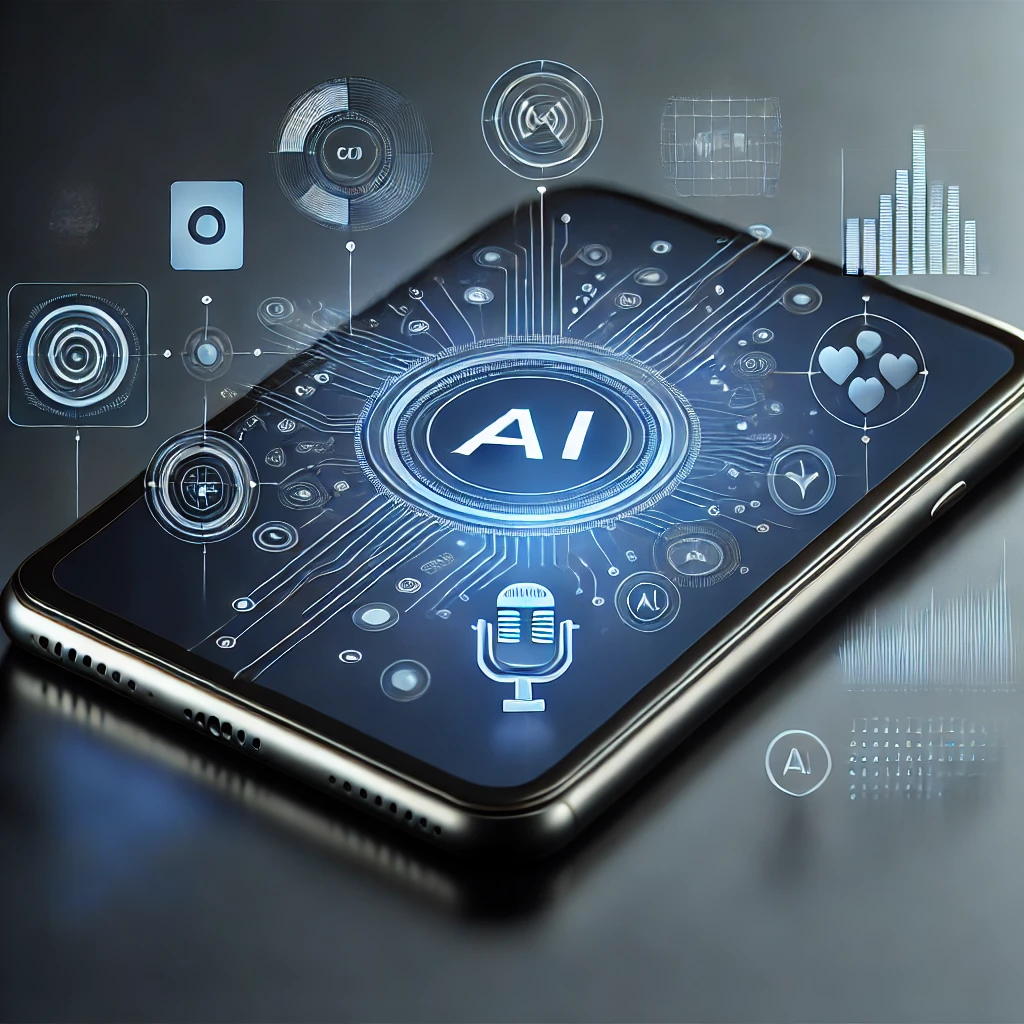How AI is Enhancing the User Experience in Apps

The rise of Artificial Intelligence (AI) has fundamentally transformed the way businesses design and optimize applications. With AI’s ability to analyze vast amounts of data, predict user behavior, and automate processes, it has significantly enhanced the user experience (UX) within apps. From personalized recommendations to intelligent voice assistants, AI-driven technologies are now an integral part of the app ecosystem, providing more intuitive, efficient, and enjoyable experiences for users.
This article will explore the various ways AI is enhancing the user experience in mobile and web apps, highlighting specific use cases, benefits, and future possibilities.
1. Personalization: Tailoring Experiences for Individual Users
One of the most powerful ways AI enhances the user experience in apps is through personalization. AI algorithms analyze user behavior, preferences, and interactions to tailor the app experience to each individual. By gathering data on user activity—such as what content they consume, which features they use most often, and when they engage with the app—AI can create a highly personalized environment.
For example, in entertainment apps like Netflix or Spotify, AI tracks what shows or music users prefer and provides personalized recommendations based on their tastes. The more a user interacts with the app, the better the system becomes at predicting what they will enjoy next. This personalization not only increases user engagement but also encourages longer usage sessions, as the app continuously adapts to meet the user’s evolving interests.
In e-commerce apps, AI personalizes the shopping experience by analyzing browsing history and previous purchases to recommend products that users are more likely to buy. This enhances the likelihood of conversions and helps users discover products they may not have found otherwise.
2. Voice and Chatbots: Enhancing Interaction Through Natural Language Processing
Voice assistants and chatbots have become central to many mobile apps, providing users with a more natural way to interact with the app. Thanks to advancements in Natural Language Processing (NLP) and machine learning, AI-driven chatbots and voice assistants can now understand and respond to complex user queries in a conversational manner.
AI-powered chatbots are widely used in customer service apps, providing real-time responses to user inquiries. They can assist with booking, troubleshooting issues, or answering frequently asked questions. For instance, in banking apps, chatbots can help users check account balances, transfer funds, or even provide insights into spending patterns. These bots can carry on intelligent conversations, providing quick solutions without needing human intervention, which significantly reduces waiting times for users.
In addition to chatbots, voice assistants like Siri, Alexa, and Google Assistant have become integral parts of mobile apps. AI allows users to interact with their devices hands-free, making the experience more seamless. Whether it’s setting a reminder, sending a message, or asking for directions, voice assistants streamline tasks by processing spoken language in real time, making it a more efficient way to interact with mobile apps.
3. Predictive Analytics: Anticipating User Needs
AI’s ability to analyze user behavior and predict future actions is a game-changer for improving app UX. Predictive analytics allows apps to anticipate user needs before they even express them. By analyzing historical data, AI can forecast what a user is likely to do next and present relevant information, content, or features at the right time.
For instance, in fitness apps, AI can predict when a user is most likely to want a workout or a diet recommendation based on their past habits and behavior. If the user has a history of exercising in the morning, the app can send notifications or reminders at the right time to encourage them to stay on track with their goals.
In navigation apps like Google Maps, AI uses predictive analytics to suggest the fastest routes based on real-time traffic data and the user’s past journey patterns. This helps users save time and avoid unnecessary delays, making the app more valuable and efficient.
4. Smart Search: Improving Discovery with AI
AI has greatly improved search functionalities in mobile apps by making them smarter and more intuitive. Traditional search methods relied on basic keyword matching, but with AI-powered search, apps can understand the intent behind a user’s query and provide more accurate and relevant results.
For example, AI-driven search algorithms in shopping apps can not only match keywords but also recognize synonyms and understand context. If a user searches for “red dress,” the AI can return results that match the color and style of the dress, even if the search query is phrased differently. Similarly, in news apps, AI can suggest articles based on topics or sentiments rather than just keywords.
Moreover, AI-powered visual search is becoming increasingly popular in e-commerce and fashion apps. Users can take pictures of products they like, and the AI system will identify similar items in the app’s inventory. This visual search feature improves product discovery and provides a more engaging shopping experience for users.
5. Image Recognition: Enhancing Visual Experiences
Image recognition, powered by AI, is transforming how apps handle and interact with images. In photo apps, AI can automatically tag people, objects, or locations in pictures, making it easier for users to organize and search through their photo libraries.
In social media apps like Instagram and Facebook, AI helps identify objects and scenes in photos, automatically suggesting hashtags or even captions. This makes sharing photos faster and more engaging, as users can add context or discover new content with minimal effort.
In e-commerce apps, AI-driven image recognition can help users find products visually. For example, a user can take a photo of a product they like—whether it’s a piece of furniture or clothing—and the app will use image recognition to find similar products available for purchase. This visual search experience enhances product discovery and streamlines the shopping process.
6. Enhanced Security: Using AI for Fraud Detection
Security is a top priority for any mobile app, and AI plays a vital role in protecting user data and ensuring secure transactions. AI-driven security features, such as facial recognition, biometric authentication, and anomaly detection, are improving app security and enhancing the overall user experience.
Many apps now incorporate biometric authentication methods, such as fingerprint scanning or facial recognition, to ensure that only authorized users can access sensitive information. These AI-powered security features are not only more convenient for users but also more secure than traditional password-based authentication.
Moreover, AI can detect fraudulent activity by analyzing user behavior and identifying patterns that may indicate suspicious transactions. For instance, in banking apps, AI can analyze spending habits and flag unusual transactions, such as an attempt to make a large purchase from an unfamiliar location, which could indicate fraud. By preventing unauthorized access and fraud, AI helps users feel more confident and secure when using apps.
7. Automated Personal Assistants and Task Management
AI-powered personal assistants are revolutionizing task management apps by providing smarter ways for users to organize and prioritize their activities. These virtual assistants can learn from user behavior, offer suggestions for more efficient task management, and even automate repetitive tasks.
For example, AI can help users organize their calendars by automatically scheduling meetings, sending reminders, or suggesting optimal times for appointments based on their availability. Task management apps like Todoist or Microsoft To Do can use AI to categorize tasks and remind users about deadlines, ensuring nothing falls through the cracks.
Furthermore, AI can be integrated into productivity apps to optimize work habits. By analyzing how a user interacts with their apps, AI can suggest ways to improve productivity, such as minimizing distractions or recommending the best time to complete specific tasks.
8. Future Possibilities: The Next Level of AI-Powered UX
As AI continues to evolve, the future of app user experiences will be shaped by even more advanced technologies. The integration of AI with augmented reality (AR) and virtual reality (VR) is already providing more immersive and interactive experiences. For instance, AI-driven AR apps can overlay real-time information onto the physical world, such as providing directions or visualizing furniture in a user’s home.
In the future, we can expect AI to become even more integrated into our daily lives, with apps becoming more proactive and adaptive to user needs. Voice interfaces may become the default method of interaction, and AI could anticipate user actions with even greater precision, creating more seamless, intuitive, and personalized experiences.
Conclusion
AI is fundamentally transforming how users interact with mobile and web apps, enhancing user experiences in countless ways. From personalized recommendations and voice assistants to advanced security features and smart search functionalities, AI is making apps smarter, more efficient, and more intuitive. As AI technology continues to advance, the possibilities for improving user experiences are endless, promising even more engaging, efficient, and personalized app interactions in the future.





